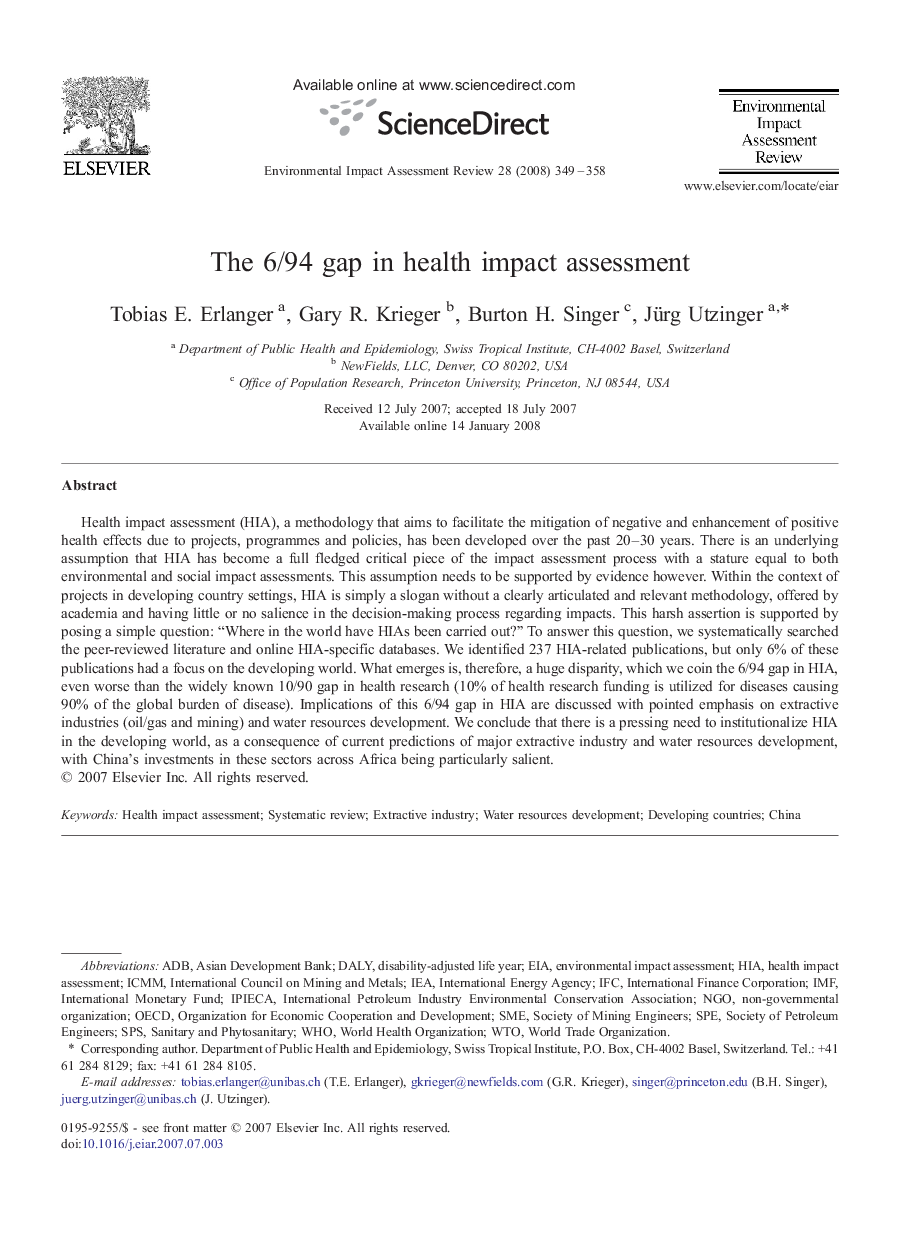| کد مقاله | کد نشریه | سال انتشار | مقاله انگلیسی | نسخه تمام متن |
|---|---|---|---|---|
| 1053239 | 1485013 | 2008 | 10 صفحه PDF | دانلود رایگان |

Health impact assessment (HIA), a methodology that aims to facilitate the mitigation of negative and enhancement of positive health effects due to projects, programmes and policies, has been developed over the past 20–30 years. There is an underlying assumption that HIA has become a full fledged critical piece of the impact assessment process with a stature equal to both environmental and social impact assessments. This assumption needs to be supported by evidence however. Within the context of projects in developing country settings, HIA is simply a slogan without a clearly articulated and relevant methodology, offered by academia and having little or no salience in the decision-making process regarding impacts. This harsh assertion is supported by posing a simple question: “Where in the world have HIAs been carried out?” To answer this question, we systematically searched the peer-reviewed literature and online HIA-specific databases. We identified 237 HIA-related publications, but only 6% of these publications had a focus on the developing world. What emerges is, therefore, a huge disparity, which we coin the 6/94 gap in HIA, even worse than the widely known 10/90 gap in health research (10% of health research funding is utilized for diseases causing 90% of the global burden of disease). Implications of this 6/94 gap in HIA are discussed with pointed emphasis on extractive industries (oil/gas and mining) and water resources development. We conclude that there is a pressing need to institutionalize HIA in the developing world, as a consequence of current predictions of major extractive industry and water resources development, with China's investments in these sectors across Africa being particularly salient.
Journal: Environmental Impact Assessment Review - Volume 28, Issues 4–5, May–June 2008, Pages 349–358